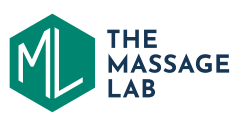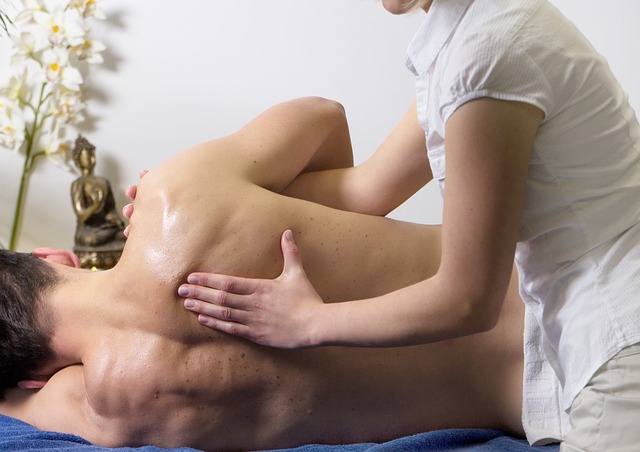Tiefengewebsmassage Guide
Are you interested in learning about Tiefengewebsmassage? In this comprehensive guide, we will explore Tiefengewebsmassage, its benefits, techniques, and how to effectively perform it. Let’s delve into the world of deep tissue massage!
Introduction to Tiefengewebsmassage
Tiefengewebsmassage, also known as deep tissue massage, is a therapeutic technique that focuses on reaching the deeper layers of muscles and connective tissues in the body. Unlike traditional relaxation massages, Tiefengewebsmassage aims to alleviate chronic muscle tension, improve mobility, and promote overall well-being.
Deep tissue massage involves applying firm pressure and slow strokes to target specific areas of tension and discomfort. The therapist uses their fingers, knuckles, or elbows to penetrate through the superficial layers of muscles and access the underlying tissues. This technique can be intense, but it can provide significant relief and long-lasting benefits.
Benefits of Tiefengewebsmassage
Tiefengewebsmassage offers numerous benefits for both the mind and body. Let’s explore some of the key advantages:
-
Pain Relief: Deep tissue massage is highly effective in relieving chronic pain, such as back pain, neck pain, and muscle soreness caused by injuries or muscle imbalances. The targeted pressure helps to break down adhesions and knots in the muscles, reducing pain and discomfort.
-
Improved Flexibility: By targeting deep layers of muscles, Tiefengewebsmassage helps to release tension, increase flexibility, and improve range of motion. This can be particularly beneficial for individuals experiencing muscle stiffness or limited mobility.
-
Stress Reduction: The massage technique promotes relaxation, reduces stress hormones, and induces a sense of calm and well-being. Deep tissue massage can be a valuable tool in managing stress and promoting overall mental and emotional wellness.
-
Better Posture: Regular Tiefengewebsmassage can help correct postural imbalances and alleviate muscle stiffness, contributing to better overall posture. By releasing tension in the muscles and improving alignment, deep tissue massage can support a healthier and more upright posture.
-
Enhanced Athletic Performance: Athletes often benefit from Tiefengewebsmassage as it helps to prevent injuries, improve muscle recovery, and enhance overall athletic performance. By targeting specific muscle groups and addressing areas of tension, deep tissue massage can optimize muscle function and reduce the risk of injuries.
Techniques Used in Tiefengewebsmassage
To perform Tiefengewebsmassage effectively, various techniques are employed. Let’s explore some commonly used techniques:
-
Stripping: This technique involves using deep, gliding pressure along the length of the muscle fibers to release tension and break down muscle knots. The therapist applies pressure using their fingers, knuckles, or elbows, targeting specific areas of tension to promote muscle relaxation and pain relief.
-
Friction: Friction involves applying pressure with fingertips, knuckles, or elbows in a circular motion to target adhesions and tight muscles. This technique helps to increase blood flow, reduce muscle stiffness, and promote the release of toxins from the muscles.
-
Trigger Point Therapy: This technique involves applying direct pressure on specific trigger points to release muscle knots and alleviate pain. Trigger points are tight areas within the muscle that can cause referred pain. By applying targeted pressure, the therapist can help deactivate these points and relieve discomfort.
-
Stretching: Stretching techniques are often incorporated in Tiefengewebsmassage to improve flexibility and release tension in the muscles. The therapist may guide the client through passive stretches or use techniques like active release stretching to enhance muscle elasticity and range of motion.
-
Myofascial Release: Myofascial release focuses on releasing tension in the fascia, the connective tissue that surrounds muscles, by applying sustained pressure. The therapist uses slow and gentle pressure to stretch and release the fascia, promoting improved muscle function and reducing pain.
By combining these techniques, a skilled Tiefengewebsmassage therapist can customize the treatment to address the specific needs and preferences of each client, ensuring a tailored and effective massage experience.
Performing Tiefengewebsmassage
To perform Tiefengewebsmassage, follow these steps:
-
Prepare the Environment: Create a calm and relaxing atmosphere by dimming the lights, playing soothing music, and ensuring a comfortable temperature. This helps the client feel at ease and enhances the overall massage experience.
-
Communicate with the Client: Before starting the massage, have a conversation with the client to understand their specific needs, any injuries, or areas of concern. This allows you to tailor the treatment to their individual requirements and ensure their comfort and safety.
-
Warm-up: Begin with a gentle warm-up to prepare the muscles for deeper work. Use long, sweeping strokes to warm up the muscles and increase blood circulation. This helps to relax the client and prepares their muscles for the upcoming deep tissue techniques.
-
Choose the Right Technique: Select the appropriate technique based on the client’s needs and preferences. Remember to start gradually and increase pressure as tolerated. Customizing the treatment to the individual ensures maximum benefit and minimizes discomfort.
-
Apply Deep Pressure: Use your fingers, knuckles, or elbows to apply deep pressure along the muscle fibers. Start with slow, controlled movements and gradually increase pressure to target deeper layers. Ensure that the client communicates any discomfort or pain during the massage, as this will help you adjust the pressure accordingly.
-
Focus on Problem Areas: Pay special attention to areas with tension, knots, or pain. Spend more time working on these areas using the appropriate techniques to release tension and alleviate discomfort. Applying additional pressure, using stripping or trigger point therapy, can effectively address these problem areas.
-
Incorporate Stretching: Integrate stretching techniques during the massage to enhance flexibility and further release tension in the muscles. This can include passive stretching, where you gently stretch the client’s muscles, or active release stretching, where the client actively participates in the stretches.
-
Maintain Communication: Throughout the massage, regularly check in with the client to ensure their comfort and adjust pressure or techniques as required. Effective communication is key to providing a personalized and satisfying massage experience.
-
Cool Down: Towards the end of the massage, gradually reduce pressure and transition to lighter, relaxing strokes to help the body return to a state of calm. This gentle transition allows the client to ease out of the deep tissue work and promotes relaxation.
-
Hydration: Advise the client to drink plenty of water after the massage to flush out toxins released during the treatment and promote overall well-being. Hydration is essential to support the body’s natural detoxification process and optimize the benefits of the massage.
Conclusion
Tiefengewebsmassage, or deep tissue massage, is a highly beneficial therapy that can help relieve pain, improve flexibility, reduce stress, and enhance overall well-being. By understanding the techniques and following the step-by-step guide provided in this article, you can confidently perform Tiefengewebsmassage and provide a rejuvenating experience for your clients. Remember to always prioritize communication, listen to your client’s needs, and adjust your techniques accordingly. Happy massaging!
FAQ
Q: What is Tiefengewebsmassage?
A: Tiefengewebsmassage, also known as deep tissue massage, is a therapeutic massage technique that targets deeper layers of muscles and connective tissues in the body to alleviate chronic muscle tension and improve overall well-being.
Q: What are the benefits of Tiefengewebsmassage?
A: Tiefengewebsmassage offers several benefits including pain relief, improved flexibility, stress reduction, better posture, and enhanced athletic performance.
Q: What techniques are used in Tiefengewebsmassage?
A: Techniques commonly used in Tiefengewebsmassage include stripping, friction, trigger point therapy, stretching, and myofascial release.
Q: How does Tiefengewebsmassage help with pain relief?
A: Tiefengewebsmassage effectively relieves chronic pain, such as back pain, neck pain, and muscle soreness, by targeting deep layers of muscles and releasing tension caused by injuries or muscle imbalances.

